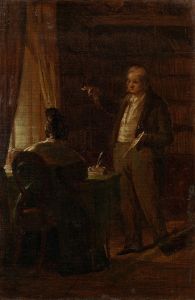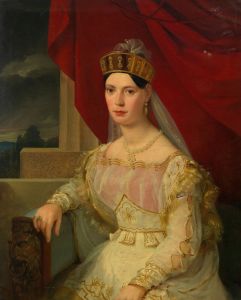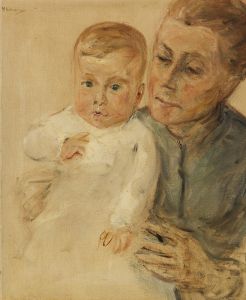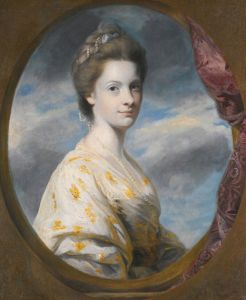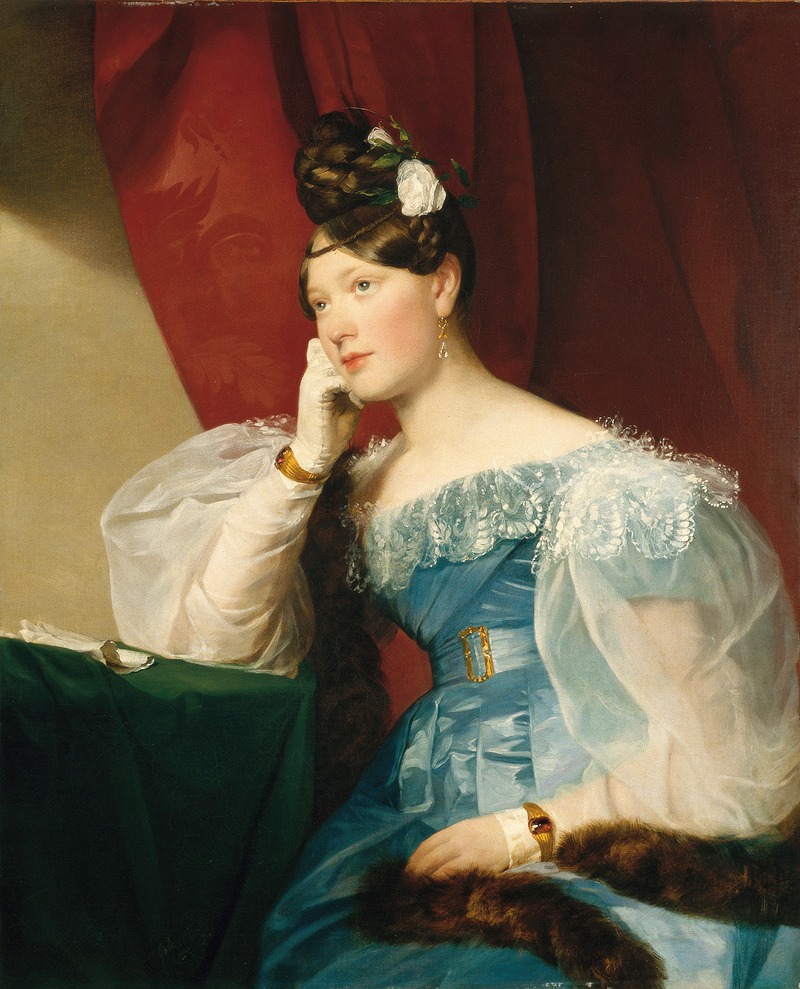
Countess Julie von Woyna
A hand-painted replica of Friedrich von Amerling’s masterpiece Countess Julie von Woyna, meticulously crafted by professional artists to capture the true essence of the original. Each piece is created with museum-quality canvas and rare mineral pigments, carefully painted by experienced artists with delicate brushstrokes and rich, layered colors to perfectly recreate the texture of the original artwork. Unlike machine-printed reproductions, this hand-painted version brings the painting to life, infused with the artist’s emotions and skill in every stroke. Whether for personal collection or home decoration, it instantly elevates the artistic atmosphere of any space.
Friedrich von Amerling was a prominent Austrian portrait painter in the 19th century, known for his detailed and realistic depictions of the European aristocracy. One of his notable works is the portrait of Countess Julie von Woyna. This painting exemplifies Amerling's skill in capturing the elegance and sophistication of his subjects, a hallmark of his artistic style.
Friedrich von Amerling was born in Vienna in 1803 and studied at the Academy of Fine Arts in Vienna. He furthered his education in Prague, before traveling to London and Paris, where he was influenced by the works of Sir Thomas Lawrence and other contemporary portraitists. Amerling returned to Vienna and became one of the most sought-after portrait painters of his time, receiving numerous commissions from the Austrian nobility and other European elites.
The portrait of Countess Julie von Woyna is a testament to Amerling's mastery in portraying the delicate features and refined demeanor of his subjects. The painting is characterized by its meticulous attention to detail, particularly in the rendering of textures and fabrics, which was a distinctive feature of Amerling's work. The countess is depicted with a serene expression, her gaze directed slightly away from the viewer, which adds a sense of introspection and grace to the portrait.
Amerling's use of light and shadow enhances the three-dimensional quality of the painting, bringing the countess to life on the canvas. The soft lighting accentuates her facial features and the intricate details of her attire, while the background remains understated, ensuring that the focus remains on the subject. This technique was typical of Amerling's portraits, where the sitter's personality and status were emphasized through subtle yet effective compositional choices.
The portrait of Countess Julie von Woyna reflects the cultural and social milieu of 19th-century Austria, a period marked by a fascination with portraiture among the aristocracy. Portraits were not only a means of preserving one's likeness but also a way to convey social standing and personal refinement. Amerling's ability to capture these elements made him a favorite among the nobility, and his works are considered important cultural artifacts from this era.
Throughout his career, Amerling painted over 1,000 portraits, and his works are held in high regard for their artistic quality and historical significance. The portrait of Countess Julie von Woyna is part of this rich legacy, showcasing Amerling's contribution to the art of portraiture and his role in documenting the lives of the European elite.
Today, Friedrich von Amerling's paintings, including the portrait of Countess Julie von Woyna, are housed in various museums and private collections, where they continue to be appreciated for their beauty and craftsmanship. Amerling's influence on portrait painting remains significant, and his works are studied for their technical excellence and their ability to convey the character and status of their subjects with elegance and precision.






